Question Number 1
Please provide 3 strategies in which you will work with the School Board and School Police Chief to combat increasing acts of misconduct by students and teachers in our schools and school events. This includes gun violence, fights, and inappropriate contact with students and/or teachers.
As students returned to school after COVID-19, we've seen a significant increase in severe student behaviors and a lack of executive functioning skills. Our students are struggling, and this poses a challenge for teachers, administrators, and staff, necessitating additional resources and targeted support.
With experience as a former teacher and principal across all levels, preschool through 12th grade, I have directly engaged with students and staff across school environments, providing leadership and support across a spectrum of needs. I believe in a two-fold approach to safety and security. First, we must establish order, set clear expectations for students and adults, and communicate the consequences of choices. We must not tolerate severe behaviors, including possession or use of weapons in our schools or community. While ensuring safety and security is paramount, it's crucial to acknowledge that students and staff require more than physical safety. They must also feel a sense of belonging. When students and staff feel cared for, they're more likely to attend school, meet expectations, and achieve desired outcomes. We want students to feel connected to their school through teachers, administrators, and staff, and through engagement in activities such as clubs, athletics, or performing arts. As educators, it's imperative to understand each student's needs, clearly communicate expectations, and consistently apply consequences for individual choices.
To address these challenges, my first step would be to gather and analyze data, including perspectives from students, teachers, parents, and administrators. This would involve reviewing current procedures, protocols, and resources such as the student code of conduct, climate and culture surveys, disciplinary data, and relevant policies and regulations. Additionally, conducting a comparative analysis with other districts would provide insights into the root causes of behavioral issues and inform targeted interventions.
Fostering open communication and understanding is essential and another key strategy for success. Drawing from my experience as superintendent of Loudoun County Public Schools, I would facilitate community listening sessions to rebuild trust and gain insights into the issues at hand. I would also strategically and intentionally leverage local, state, and federal resources and expertise to support our efforts. For instance, in my current role, I have collaborated with law enforcement partners and external experts to establish a Blue-Ribbon Panel for Safety and Security. This panel assessed the current state of safety and security within the school division and made recommendations for improvement across all aspects of technical, physical, cybersecurity, and mental health. Utilizing assessments like these allows us to identify immediate steps and long-term actions to enhance safety and security measures.
In my current role overseeing safety and security efforts within the school division, I've gained firsthand experience in providing comprehensive and targeted support across a large district. By employing the above-mentioned strategies, we can identify and address the underlying issues affecting students and staff, ensuring clear communication, accountability, and access to necessary resources. I believe that by understanding our data, processes, and stakeholders' perspectives, we can effectively address misconduct and uphold our commitment to providing quality education for every child every day.
Question Number 2
The Duval County Public Schools' annual budget exceeds two billion dollars. Please describe the work experiences you have had that show your ability to manage a budget of this size. Additionally, please describe your approach to budget forecasts, i.e., factors to be considered, appropriate timelines, etc.
As Superintendent, I was fortunate to lead Loudoun County Public Schools and spearhead our district’s efforts to create, present, advocate for, and pass our $1.7 billion budget for fiscal year 2024. Currently as Chief of Staff, I remain deeply involved in all aspects of budget development, proposal, advocacy, and monitoring processes across the district.
A year-round process, our budget is intentionally tied to our Strategic Plan, which is driven by our mission, vision, goals, and objectives. I firmly believe that our budget should reflect effective investments in our organization while striving for maximum efficiency. The budgeting process begins with a needs assessment, including opportunities for reallocation of resources. By projecting student enrollment, specialized programs, and other major programmatic needs, we estimate potential budget shortfalls or surpluses from our local, state, and federal revenue streams.
During my tenure as superintendent, I engaged with various stakeholder groups to ensure that our budget was targeted and specific in addressing our needs while fostering innovation and significant advancements in line with our strategic plan goals. Principals provided insights into school-based needs and collaborated with their staff to develop their respective budgets. Department heads worked with staff to compile and present needs-based budgets, considering ongoing initiatives throughout the district.
To gather additional input and feedback, I established the Superintendent’s Student, Teacher, and Principal Advisory Councils, each representing voices and perspectives from schools across the district. Monthly meetings allowed representatives to discuss key topics, ensuring that our actions aligned with our needs and supported our primary focus of student learning. These groups also played a crucial role in providing initial input on budget needs and offering feedback on the budget proposal.
I believe that the budget development process should be collaborative and inclusive of the School Board. Therefore, I met individually with each board member to discuss their perspectives on district needs. This step was pivotal in co-creating a budget while addressing other non-budgetary priorities outside the budget process.
In January, I presented the budget to the School Board, explicitly linking district needs to our strategic plan goals and objectives. Building on our strategic plan and making explicit connections to our budget needs was essential for community understanding. Following the budget presentation, several elected officials praised the clarity of the $1.7 billion budget request, emphasizing its significance in contributing to our continued success.
The presentation of the budget proposal to the School Board marked the transition from the proposal phase to the advocacy and understanding phase. I took our budget proposal on the road and presented it to various stakeholders, including principals, senior staff, Superintendent Advisory Groups, the Board of Supervisors, the Chamber of Commerce, parent and community groups, and educational committees. Throughout the process, I maintained regular communication with School Board members, keeping them informed and updated on budget developments. Board members advocated for the plan with their constituents and community leaders. Due to our collective efforts with our local governing and funding body, we passed the first fully funded budget in over six years.
Question Number 3
Given significant declines in student enrollment in recent years and escalating construction costs, our district is facing school closures to address district budget shortfalls and will also need to revise the “15 Year Facility Plan” funded by our half penny referendum. If selected as our new superintendent, what steps would you take to bring our current district budget into alignment and prioritize projects within the 15-year facility plan? Additionally, how would you incorporate community feedback into your decision-making process?
Fundamentally, I believe that we, the school district and School Board, should represent the values and wishes of the community in which we serve. To do this we need to ensure that we understand the local and community issues. We must ask the right questions, listen, and work to make sure that we are hearing from all voices in our community.
Our community needs to understand the issues facing our district and it is our responsibility to have a clear and transparent process for understanding, review, and decision-making. The recent third-party report on enrollment and information on boundary options and potential school closures are helpful points for the community to understand. While seeking to listen and understand, we need to recognize that there will be differing opinions and perspectives. By listening and considering differing ideas, it will allow us to consider alternative solutions.
In my current role and district, I have supported the development, presentation and leadership of our district’s six-year Capital Improvement Program (CIP) and Capital Asset and Preservation Program (CAPP). In fiscal year 2025, this CIP represents outlay and improvements of over $513.8 million and CAPP expenditures of over 7.8 million.
Community feedback from representative and unique voices across our district regarding capital projects and expenditures, like many other key topics, is critical and I have experience consistently working collaboratively with our community to support our work. As an example, in my current district, as each School Board policy is reviewed, it is shared publicly and sent directly to each of the Board advisory groups for review and feedback. Feedback is collected over a two-week period and then shared publicly for review and discussion by the Board. I have also led similar processes to collect community feedback on capital projects using regional or district town halls and electronic tools, to share the work that is planned, associated timelines, and key considerations.
As a part of our transparent process, shared across our district and community, we will need to analyze and consider all the data to drive our decision-making. As we revise our “15 Year Facility Plan” we will need to prioritize projects based on need and impact, recognizing the escalating construction costs and limitations on funding. The six factors that were used to propose prioritization of projects in the February 13, 2024, Board Workshop, are a great starting point for consideration and discussion. Using data to drive our decision-making, not emotion, we can leverage the expertise inside and outside of our district and community to make the best decision for the future of our students.
In the end, as Superintendent, I understand that we have challenges and constraints within our budget and capital improvement plan. I recognize that we must act and that not doing anything is not a solution or option. I am willing and able to have these difficult conversations that are needed.
Video Submissions
Videos cannot exceed 13 minutes total (approximately 3 minutes per question). Candidates could submit one video with all answers or videos, one per question, or any combination desired.
How will you approach the integration of innovative schooling models and emerging technologies like OpenAI and ChatGPT to enhance in Duval, and what strategies do you envision to adapt to the changing educational landscape while ensuring equitable access for all students?
Describe a time you recognized a systematic problem within an organization. What was it and how did you create scalable systems and reorganize the department to improve the flawed process?
What is your detailed plan to eliminate all D and F graded schools?
Florida is wide open for school choice. What are you going to do to lead DCPS to compete for students?
